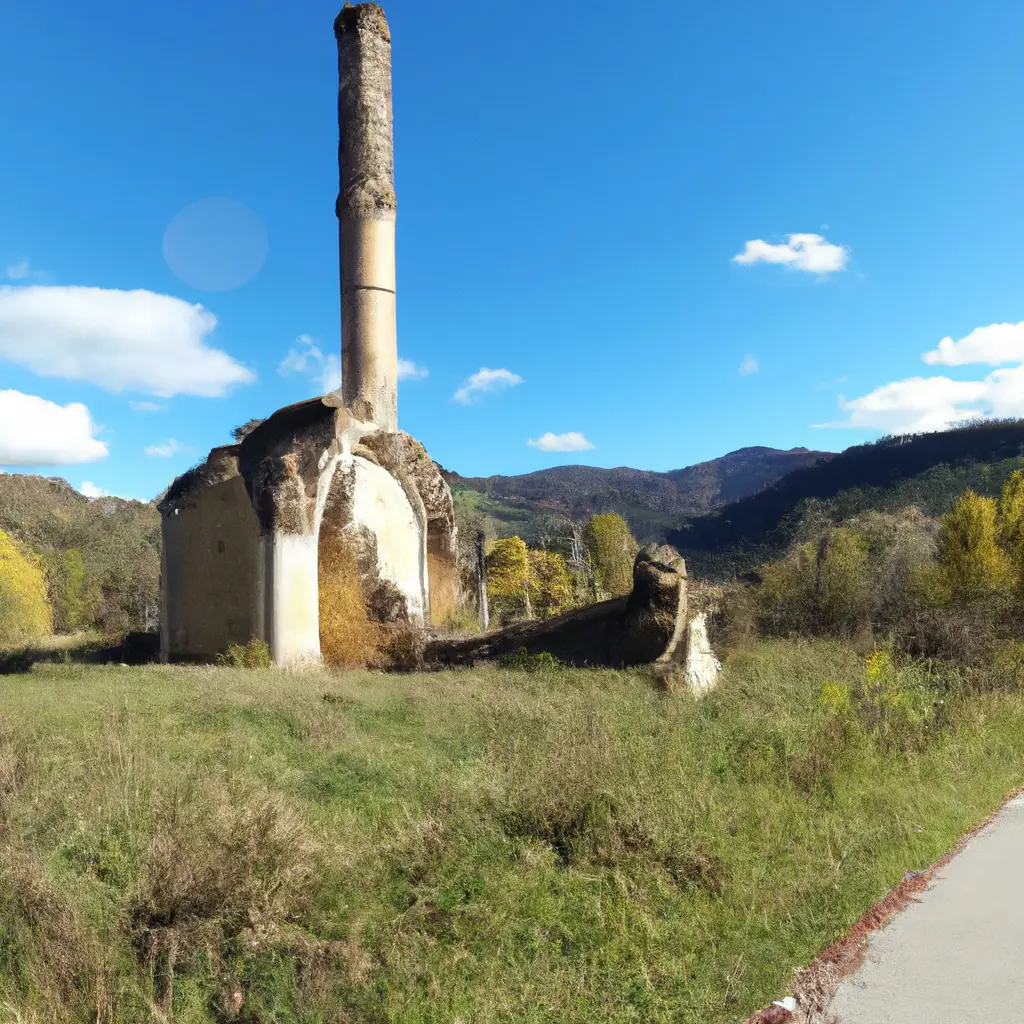Radulich residents propose new study: Jamia was a temple, but doubt the results.


Despite the results of a Polim Museum study which showed that the former Haydar Pasha jamiya in Radulici was built on a "sterile foundation," local residents say they will not allow the reconstruction of the ruined jamiya until their claims that it was built on the foundation of an ancient Christian shrine and from stone removed from St. John the Baptist Church in Chrnci are verified. They said they would not allow any desecration of the remains of the shrine until an independent commission re-examines the site.
One of the users of the family cemetery in Radulici, Rifat Veskovic, said that there had never been a church or an Orthodox cemetery on the site and that the siga was not''transferred from St. John's Church, which is also confirmed by the Polim Museum. However, residents of the village, where almost everyone lives mostly Orthodox, say they doubt the Polim Museum's findings and demand a re-inspection of the site, pointing out that the jamiya was built during the Ottoman occupation of Montenegro.
The representatives of the Islamic Community and the Bosnian Party say that the Bijelo Polje Municipality has issued urban and technical conditions for the construction of the Jamija in Radulici. They point out that after more than a decade of efforts by the Islamic Community of Montenegro and the Mejlis, conditions have been created to return this special cultural and historical vacuum to its original form.
Residents say that on May 12'. 'culture. The Islamic Community Committee responded to the said demand with a letter dated May 15, 2007, from which, among other things, "they are not going to build a jamiya on the basis of the existing jamiya in Radulichi," the residents said.
They stress that despite this, someone is interested in disrupting the neighborly relations between Orthodox and Muslim residents, and despite the assurance that there will be no works, on March 8, 2008, works were carried out near the ruins of the religious site, which do not belong to the cemetery. "At that time, we suspect construction vehicles damaged more than 20 Orthodox graves, so we filed complaints with the police," residents said.
Residents provided Vesti with an inquiry to the municipality about the construction of a church in''The community is incomprehensible and unacceptable, and we believe that insisting on everything related to obtaining documents for the reconstruction of the jamiya leads to an unwanted aggravation of relations between neighbors of different faiths, with whom we want to have the best possible relations,' the residents say, adding that it is thanks to them that the remains of the jamiya have been preserved.
They point out that the said plot where the remains of the religious site are located was registered as a "cemetery" and the land where the religious site is located was registered as a "Jamia Church". Later, in 1996, the said plot under the site was registered as 'Church' and later, in 2008, 'ruins of religious site' and in 2008, 'Jamia' was registered'an area of 100 square meters by culture' ".... "The importance of this enterprise is widely recognized, which is why our diaspora has shown great interest in this vacuf," they say in a statement.






The residents say that on May 12, 1996, members of the Islamic Community attempted to rebuild the ruins, when Radulici villagers self-organized and prevented this from happening, and in order to avoid undesirable consequences, they informed all relevant state authorities. "They attempted to carry out the work again in the same month, after which the villagers held a meeting at which it was unanimously decided to stop, i.e. not''to allow works of any kind on the disputed territory, except for the cemetery of our neighbors, which is close to the ruins. The conclusions from the meeting were sent to the then Prime Minister and President of Parliament, the Mayor of Bijelo Polje, the Ministry of Culture, the Islamic Religious Community, and the Directorate for the Protection of Cultural Monuments. The Islamic Community committee responded to the said demand with a letter dated May 15, 2007, from which, among other things, "they are not going to build a jamiya on the basis of the existing jamiya in Radulici," the residents said.
They emphasize that despite this, someone is interested in disrupting neighborly relations between Orthodox and Muslim residents, and despite the assurance that the works are not''There will be, on March 8, 2008, work was carried out near the ruins of a religious site that does not belong to the cemetery. "Then, as we suspect, construction machines damaged more than 20 Orthodox graves, so we filed complaints with the police," residents said.
The residents provided Vesti with an inquiry to the municipality about the construction of a church in Radulici in the village of Ђurђevica, which was registered on May 24, 1996, but to their knowledge it is not listed in the local documentation. "In addition to all this, according to the guidebook of Turkish traveler Evliya Çelebi, Haydar Pasha built the jamiya solely for his own use and not for the believers. Most old residents know that the doors of the facility were church doors, with a key bearing a cross, and that candles were regularly lit nearby.'''There is one family of the Islamic faith living in the village - the Vesković family with two members, while the Jamia exists in all the surrounding villages bordering Radulići, in Črnči - about two kilometers from Radulići, in Ivanyami - 4.5 kilometers, Godievu - 5.6 kilometers and Loznaya, and in these villages there are also the remains of a church. Such behavior of the Islamic Community is incomprehensible and unacceptable, and we believe that insisting on everything related to obtaining documents for the reconstruction of the Jamia leads to an undesirable aggravation of relations between neighbors of different faiths, with whom we want to have the best relations," the residents say, adding that it is thanks to them that the remains of the Jamia were preserved.
They point out that the said site, where the remains of the''religious site, was registered as "cemetery" and the land on which the religious site is located was registered as "church-jamiya". Later, in 1996, the said land under the facility was registered as 'Church', and later in 2008, 'ruins of religious facility', and in 2008, 'jamiya of 100 square meters by culture' was registered "..." "The importance of this enterprise is widely recognized, which is why our diaspora has shown great interest in this waqf," they say in a statement. They also point out that the Municipality of Bijelo Polje recognized the importance of such cultural wealth and therefore issued.
Comment
Popular Posts
Popular Offers




Subscribe to the newsletter from Hatamatata.com!
Subscribe to the newsletter from Hatamatata.com!
I agree to the processing of personal data and confidentiality rules of Hatamatata





